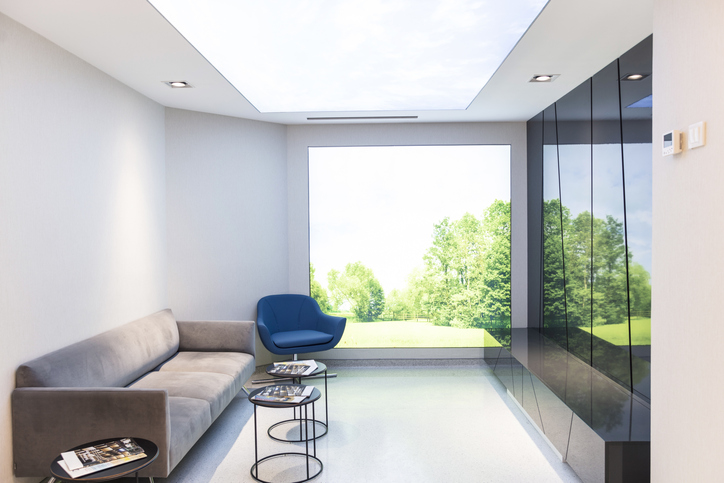Blemishes are one of the major cosmetic concerns for many people. They often become more prominent as we age, and many people are concerned about their appearance. There are a variety of methods for blemish removal, but laser treatment is considered to be particularly effective.
Here we will explain in detail the causes of blemishes, how to prevent them, and the specific effects of laser treatment and precautions to take after the procedure. We hope you will find this information necessary so that all those who suffer from blemishes can receive safe and effective treatment.

Graduated from the Faculty of Medicine, National Kumamoto University. After serving as the director of major beauty clinics in Japan, etc., he opened Aladdin Aesthetic Clinic in 2023. He is a professional in aesthetic medicine with a doctorate in anti-aging research and many years of experience. With the motto of "Toward the realization of cosmetic medicine without lies," he aims to be the "Only One" together with his patients.
Causes and types of blemishes

Blemishes are a type of pigmentation that appears on the skin and are a cosmetic concern for many people. They often increase with age and are especially likely to occur on areas that are exposed to UV rays on a daily basis, such as the face and hands. Although there are many different causes of spots, the most common is the effect of ultraviolet rays.
When the skin is exposed to ultraviolet rays, a pigment called melanin is produced. This melanin is a defensive reaction to protect the skin, but when it is produced in excess, it appears as spots on the skin. Aging, hormonal imbalance, stress, and heredity are also possible causes of skin blemishes.
There are several types of stains, the most common of which include
| Type of stain | child-bearing age | feature |
|---|---|---|
| senile pigmentation | 30s to 50s | Blemishes appear mainly due to aging, especially on the face and the backs of the hands. |
| Freckles | Childhood to adolescence | Small spots with a strong genetic component, often seen since childhood |
| post-inflammatory hyperpigmentation | all ages | Blemishes after skin inflammation, such as acne or scars |
| chloasma | 30s to 40s | Symmetrical spots on the cheeks and forehead due to hormonal imbalance |
Relationship between lifestyle and blemishes
Daily lifestyle also plays a major role in the development of blemishes. Inadequate UV protection, in particular, increases the risk of developing blemishes. It is important to take measures such as applying sunscreen, using hats and sunglasses. In addition, a regular lifestyle and a well-balanced diet also help prevent blemishes.
For example, antioxidant nutrients such as vitamins C, E, and beta-carotene inhibit melanin production and are effective in preventing spots. It is recommended to actively consume fruits and vegetables rich in these nutrients.
In addition, stress management and adequate sleep are also important. Stress can disrupt hormonal balance and promote melanin production, so having time to relax can help prevent blemishes.
To prevent blemishes, it is important to adopt measures that can be taken in daily life. With proper skin care and lifestyle changes, you can maintain beautiful skin and free yourself from the worries of blemishes.
How to remove stains? Methods and Features

There are various methods for blemish removal, but three major approaches are commonly used: laser treatment, light treatment, and applied treatments such as creams and chemicals. Each method has different features, advantages, and disadvantages, and it is important to choose the appropriate method according to the individual blemish condition and skin type. Let's take a closer look at each method here.
laser therapy
Laser treatment is one of the most effective methods of blemish removal. By irradiating the spots with laser light of a specific wavelength, it destroys the melanin pigment and lightens the spots. The major advantage of this treatment is its high efficacy and immediate results. In many cases, spots can be effectively removed in a short period of time, and the effects can often be felt after only one treatment. Furthermore, this treatment can be applied not only to the face, but also to a wide range of spots, including those on the hands and arms.
However, laser treatment has some disadvantages. First, the cost is often higher than other treatments. In addition, redness and swelling may occur after treatment, which may take several days to a week to completely subside. Furthermore, depending on the skin type, there is a risk of hyperpigmentation and inflammation.
Even laser treatments vary in intensity depending on the type of machine. Depending on the type of blemish to be approached, the best method should be discussed during the pre-treatment consultation.
phototherapy
Light therapy (also known as IPL therapy) is a method of fading spots by irradiating a broad spectrum of light onto the spots to break down the melanin pigment. The major advantage of this treatment is that it is less painful than laser treatment and causes less discomfort during treatment. It also has less post-treatment redness and swelling, and has less impact on daily life. In addition, light therapy has the effect of promoting collagen production, which can be expected to improve skin elasticity and luster.
On the other hand, the disadvantage of light therapy is that the effect is gradual, as it deals with a fine range of spots. Compared to laser, multiple treatments are required and it may take longer to feel the effects. In addition, deep spots and dark pigmentation may not be as effective and may require ongoing maintenance.
Treatment by applying creams, chemicals, etc.
Treatment with creams and chemicals is the easiest way to begin with blemish removal. By applying creams or chemicals containing whitening ingredients directly to the spots, melanin production is inhibited and the spots are lightened. The greatest advantage of this method is its ease of use and lack of downtime. It may be less expensive than laser or phototherapy and has fewer side effects, making it suitable for long-term use.
However, there is a disadvantage in that although the application treatment can be expected to have an overall skin beautifying effect, it does not have an immediate effect on the blemish itself. It often takes time to realize the effects, and may not be effective for deep or extensive spots. In addition, continuous use is required to maintain the effect.
Is there any downtime for blemish removal treatment?

Downtime is an important factor when undergoing blemish removal treatment. Downtime refers to the temporary discomfort that occurs after treatment and the time it takes to return to normal life. Let's take a look at the downtime that may or may not occur after each treatment.
First, laser treatment involves downtime. Redness and swelling often occur immediately after treatment and may take several days to a week to completely subside. Also, the treated area may appear temporarily darker.
Light therapy, on the other hand, is a relatively short downtime procedure. Mild redness and swelling may occur after treatment, but often subside within a few hours to a day. Peeling treatments, such as applying creams or chemicals, have virtually no downtime. However, the skin may feel temporarily dry or irritated in the early stages of treatment.
| treatment | Downtime Symptoms | approach |
|---|---|---|
| laser therapy | Redness, swelling, darkening of the treated area | Cooling packs, moisturizing, keeping clean, use of physician prescribed ointments and creams |
| phototherapy | Mild redness and swelling | Cooling gel or cold water to relieve redness, improvement in a few hours |
| Application treatment of creams and chemicals | Dryness and mild irritation | Moisturizing cream use, adjust frequency of use |
Redness, swelling, and darkening of the treated area are common in laser treatment downtime. Cooling packs are effective in reducing swelling and redness, and it is important to keep the treated area well moisturized and clean. In addition, ointments and creams prescribed by the physician can be used to accelerate recovery.
Light therapy downtime may cause mild redness and swelling, but cooling gel or cold water is recommended to relieve the redness. Usually no special care is required and symptoms improve within a few hours.
Cream and chemical application treatments may cause dryness and mild irritation, but the use of moisturizing creams is effective in preventing skin dryness. If irritation is experienced, adjust the frequency of use and take appropriate care.
Impact on daily life and precautions
How does the downtime after each treatment affect daily life?
After laser treatment, it is important to protect the skin from UV rays by applying sunscreen when going outside. Also, be careful not to irritate the treated area and follow your doctor's instructions for makeup.
UV protection is still essential after light therapy. On the day of treatment, it is advisable to avoid makeup as much as possible and allow the skin to rest. For cream or chemical application treatments, there are few special precautions to take, but it is important to keep the skin moisturized as part of your daily skin care routine. In addition, UV protection should not be neglected during treatment.
Each blemish removal treatment involves different downtime, but by practicing proper handling techniques, it is possible to reduce post-treatment discomfort and return to a normal lifestyle as soon as possible. Choosing the best treatment for your lifestyle and skin condition, and following your specialist's instructions for care, is the key to maintaining beautiful skin.
Care and preventive measures after stain removal

Care after stain removal is extremely important to maximize treatment results and prevent recurrence.The most important care after blemish removal is UV protection. Protecting the skin from UV rays, one of the causes of blemishes, is essential to prevent the recurrence of blemishes. Always use sunscreen when going outside and choose one with SPF 30 or higher for best results.
In addition, prevent direct exposure of the skin to ultraviolet rays by utilizing hats, sunglasses, and parasols. UV rays are particularly strong between 10:00 a.m. and 2:00 p.m., so it is important to avoid going out during this time as much as possible or to take adequate measures.
Daily skin care also plays an important role in preventing the recurrence of blemishes. In addition to cleansing, washing, and moisturizing, skin whitening care can also be performed for more beautiful skin.
Dietary habits and lifestyle may also prevent blemishes. Actively consuming nutrients with antioxidant properties can suppress active oxygen that causes blemishes. It is recommended to actively take vitamin C, vitamin E, and β-carotene.
It is also important to lead a regular lifestyle and get enough sleep. Lack of sleep can disrupt the hormonal balance and cause blemishes. Try to have time to relax and avoid stress.
summary
This article details laser treatment for blemish removal, including its effectiveness, how to manage downtime, and how to choose the right dermatologist. Understanding the causes of blemishes and choosing the appropriate treatment is key to maintaining the health and beauty of the skin. Post-treatment care and daily skin care are also important. We hope this article will be helpful to those suffering from blemishes so that they can regain their confidence. If you have any comments or questions, please feel free to contact us.
At Aladdin Aesthetic Clinic, based on our many years of experience in cosmetic medicine and cosmetic dermatology and the knowledge of our doctoral degree, we provide counseling that aims to be "only one", offering the best treatment for each person we meet. We offer only the necessary treatments without any unnecessary information or suggestions.
Feel free to use our official LINE account for 24-hour counseling and reservations. Please feel free to contact us for free counseling for the first time or if you have any concerns.






